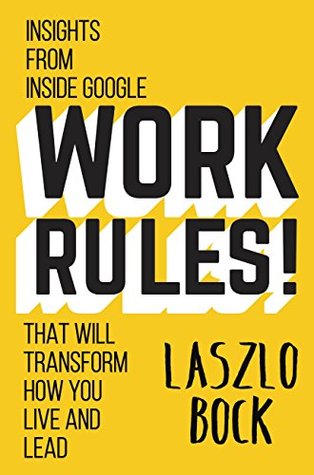More on this book
Community
Kindle Notes & Highlights
Now we asked them to list specific projects, their roles, and wha...
This highlight has been truncated due to consecutive passage length restrictions.
Peer reviewers were then asked to rate (using a slider on the screen) how well they knew that particular project and how large the individual’s impact was, and to add any comments.
I was surprised, maybe even a little embarrassed (I’m supposed to know this stuff!), at
how a few small changes could have such large effects across the board.
Making the templates more specific reduced the time spent writing reviews by 27 percent, and for the first time, 75 percent of peers felt that writing the reviews was helpful, up 26 points (on a scale of 100) from the prior year. Those using the discussion guide with their managers rated th...
This highlight has been truncated due to consecutive passage length restrictions.
Eighty percent of all Googlers now agreed that providing feedback this way was time well spent, up from 50 percent two years earlier.
promotion decisions, like rating decisions, are made by committees.
They review people who are up for promotion and calibrate them against promoted people from prior years and well-defined standards, to ensure fairness.
And it wouldn’t be Google if we didn’t also rely on the...
This highlight has been truncated due to consecutive passage length restrictions.
Peer feedback is an essential part of the technical promotion packet t...
This highlight has been truncated due to consecutive passage length restrictions.
women are less likely to nominate themselves for promotion, but that when they do, they are promoted at slightly higher rates than men.
with a small nudge
women then nominate themselves in the same proportion as men.
Of course, not everyone gets promoted, regardless of gender.
If you are not promoted, the committee provides feedback on what to do to improve your chances next time.
Google’s revenues and headcount have grown roughly 20 to 30 percent in each of the past five years.
We do our best to hire people who have a proven aptitude for learning, and then do everything we can to help them grow as fast as they can.
Making sure our people are developing is not a luxury. It’s essent...
This highlight has been truncated due to consecutive passage length restrictions.
First, set goals correctly.
Make them public. Make them ambitious.
Second, gather peer ...
This highlight has been truncated due to consecutive passage length restrictions.
People don’t like being labeled, unless they are labeled as extraordinary.
But they love useful information that helps them do their jobs better.
It’s this latter piece that most co...
This highlight has been truncated due to consecutive passage length restrictions.
Every company has some kind of evaluation system that is then used t...
This highlight has been truncated due to consecutive passage length restrictions.
Few have equally disciplined mechanisms f...
This highlight has been truncated due to consecutive passage length restrictions.
Third, for evaluation, adopt some kind of cali...
This highlight has been truncated due to consecutive passage length restrictions.
We prefer meetings where managers sit together and review people as a group. It takes more time, but it gives you a reliable, just proce...
This highlight has been truncated due to consecutive passage length restrictions.
Fourth, split reward conversations from development conversations.
Combining the two kills learning. This holds true at companies of any size.
All the other pieces of performance management: the number of performance categories, whether the categories are numbers or words, how often to give ratings, whether t...
This highlight has been truncated due to consecutive passage length restrictions.
Focus instead on what does matter: a fair calibration of performance against goals, and earnest coaching on how to improve.
The virtue of the Gaussian distribution is also its weakness.
It’s so easy to use, and superficially it seems to describe so many different phenomena that it’s applied in cases where it doesn’t describe the underlying reality.
A Gaussian distribution will massively underpredict the frequency of major phys...
This highlight has been truncated due to consecutive passage length restrictions.
Most companies manage people using a normal distribution, with most people labeled as average and two tails of weak and strong performers pushed out to the sides.
That’s an error.
In fact, human performance in organizations follows a power law distribution for most jobs.
Most organizations undervalue and underreward their best people, without even knowing they are doing it.
What most organizations miss is that people in the bottom tail represent the biggest opportunity to improve performance in your company, and the top tail will teach you exactly how to realize that opportunity.
It takes time and money to recruit new people, who often are more expensive than current employees and who need to learn the new jobs—and
We’re not looking to fire people:
We’re finding the people who need help.
In practice, the bottom tail does end up including those who “need improvement,” but it also captures “skimmers,” people who have been skimming along the lower end of meeting expectations for a long time.
So rather than following the traditional path of making “poor performance” the kiss of death,
we decided to take a different approach: Our goal is to tell every person in the bottom 5 percent that they are in that group.
That is not a fun conversation to have. But it’s made easier by the messag...
This highlight has been truncated due to consecutive passage length restrictions.
this isn’t a “shape up or ship out” conversation; it’s a sensitive talk about how to help someone develop.
A colleague once described it as
“compassionate pra...
This highlight has been truncated due to consecutive passage length restrictions.


